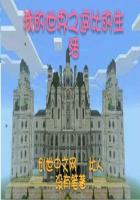We have already stated the fact that non-sanguineous animals with limbs are polypods and none of them quadrupeds.And the reason why their legs, except the extreme pairs, were necessarily attached obliquely and had their flexions upwards, and the legs themselves were somewhat turned under (bandy-shape) and backwards is plain.In all such creatures the intermediate legs both lead and follow.If then they lay under them, they must have had their flexion both forwards and backwards; on account of leading, forwards; and on account of following, backwards.Now since they have to do both, for this reason their limbs are turned under and bent obliquely, except the two extreme pairs.(These two are more natural in their movement, the front leading and the back following.) Another reason for this kind of flexion is the number of their legs; arranged in this way they would interfere less with one another in progression and not knock together.
But the reason that they are bandy is that all of them or most of them live in holes, for creatures living so cannot possibly be high above the ground.
But crabs are in nature the oddest of all polypods; they do not progress forwards except in the sense explained above, they are the only animals which have more than one pair of leading limbs.The explanation of this is the hardness of their limbs, and the fact that they use them not for swimming but for walking; they always keep on the ground.However, the flexion of the limbs of all polypods is oblique, like that of the quadrupeds which live in holes-for example lizards and crocodiles and most of the oviparous quadrupeds.And the explanation is that some of them in their breeding periods, and some all their life, live in holes.















